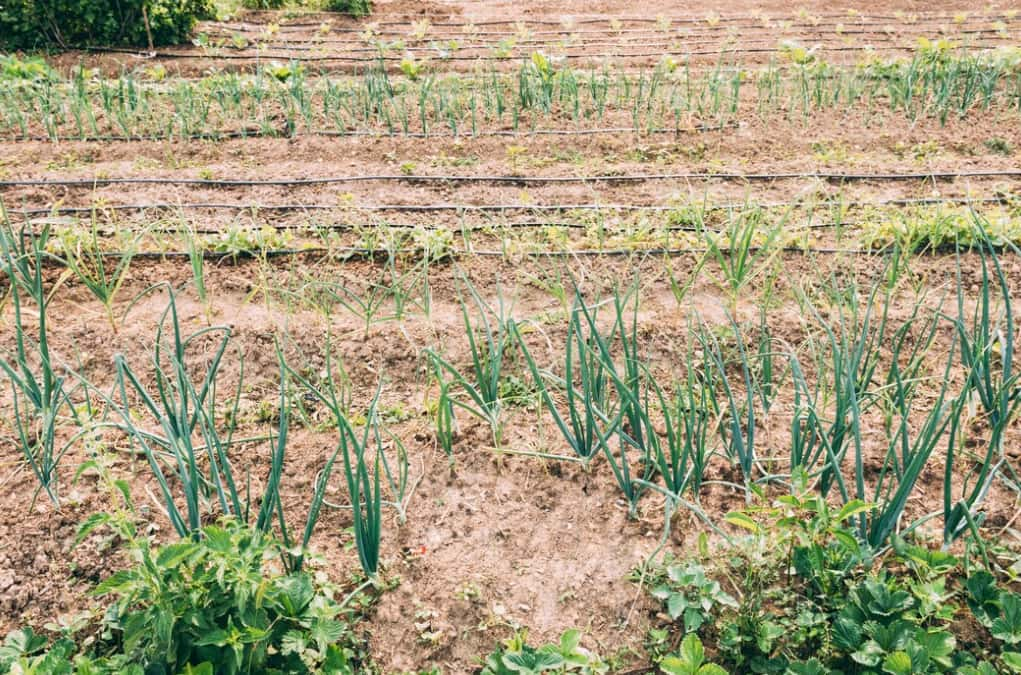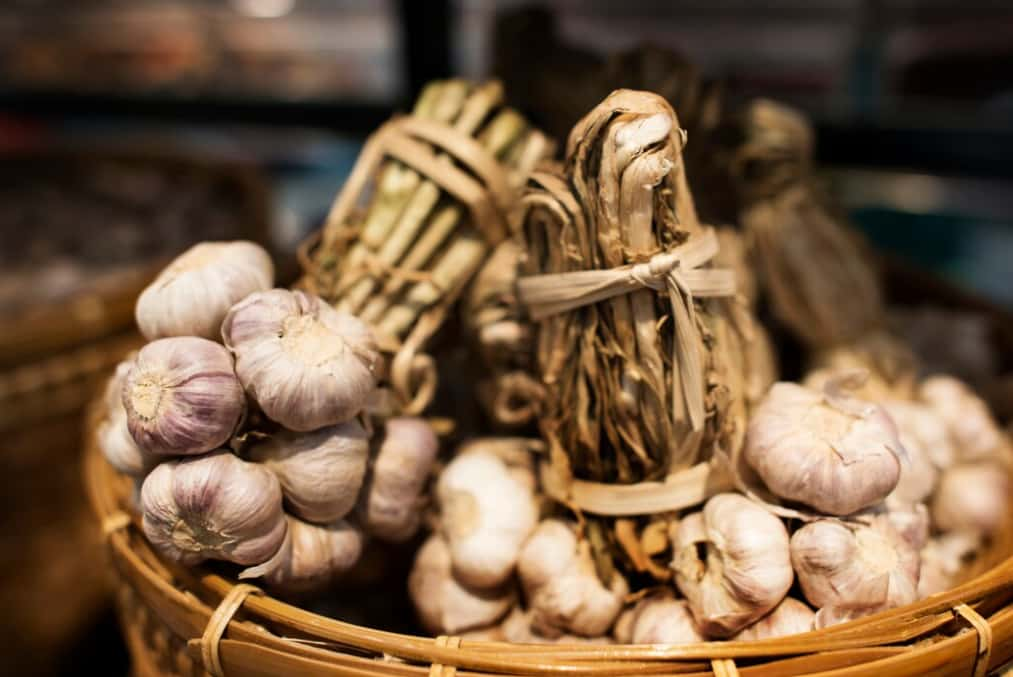As of 2019, the international market for garlic stood at a substantial $16.3 billion, with projections indicating a potential rise to $24.9 billion by 2027. In light of this, it is pertinent to examine the garlic farming sector’s status as it stands in 2023 and to delve into the profit margins that garlic farmers might anticipate per acre. From optimizing garlic harvests to cultivating profitable hardwoods, our advice ensures you maximize profitability and yield across all your agricultural and arboricultural endeavors.
Typically, an acre of garlic can yield between 10,000 to 20,000 pounds, with the going rate being around $2 per pound. Should an acre yield 9 tons, equivalent to 18,000 pounds, the average profit for a farmer could be about $28,000 per acre. However, there are farmers who manage to secure profits in the range of $40,000 to $80,000 annually per acre.
The profitability margins in garlic cultivation are largely influenced by the variety of garlic produced. Gourmet varieties of garlic might fetch prices as high as $25 per pound, in stark contrast to the $1 to $2 per pound commonly fetched by conventional varieties. Below, we will explore additional variables that can impact the financial returns from garlic farming.
Analyzing the Profits of Garlic Farming per Acre in 2023
Garlic cultivation has been a rewarding business in recent years, with the global garlic market expected to rise from $16.3 billion in 2019 to a whopping $24.9 billion by 2027. In light of these predictions, this article offers an in-depth examination of the garlic farming outlook for 2023. It also highlights the potential profits that garlic farmers can gain per acre.
The yield from an acre of land generally ranges from 10,000 to 20,000 pounds of garlic. Given the prevailing market rate of $2 per pound, a garlic farmer stands to earn an impressive profit of about $28,000 per acre. Some successful farmers have even reported earning between $40,000 and $80,000 per acre annually.
However, the type of garlic you choose to grow can dramatically influence your earnings. Gourmet garlic fetches as much as $25 per pound, while common garlic varieties sell for $1 to $2 per pound. Let’s delve into the other factors that can sway the profitability of garlic farming.
| Cost Item | Small Scale Garlic Farm (1 acre) | Medium Scale Garlic Farm (5 acres) | Large Scale Garlic Farm (20 acres) |
|---|---|---|---|
| Land Preparation | $500 – $1,000 | $2,500 – $5,000 | $10,000 – $20,000 |
| Seed Purchase | $500 – $1,000 | $2,500 – $5,000 | $10,000 – $20,000 |
| Labor | $1,000 – $2,000 | $5,000 – $10,000 | $20,000 – $40,000 |
| Irrigation | $500 – $1,000 | $2,500 – $5,000 | $10,000 – $20,000 |
| Fertilizers | $500 – $1,000 | $2,500 – $5,000 | $10,000 – $20,000 |
| Pest Control | $500 – $1,000 | $2,500 – $5,000 | $10,000 – $20,000 |
| Equipment | $2,000 – $4,000 | $10,000 – $20,000 | $40,000 – $80,000 |
| Miscellaneous | $500 – $1,000 | $2,500 – $5,000 | $10,000 – $20,000 |
| Total Cost | $6,000 – $12,000 | $30,000 – $60,000 | $120,000 – $240,000 |
Garlic Profits Per Acre: A 2023 Projection

Garlic farming is an attractive prospect for profit generation, provided the necessary resources, knowledge, and skills are at your disposal. With the potential to offer high returns per acre, it’s no wonder that garlic is a favorite among farmers.
To calculate the profit per acre from garlic farming, you must consider three critical factors: your total production costs, the market price per pound of the garlic you’re growing, and your per-acre garlic yield.
In any given year, an acre of land can yield in excess of 15,000 pounds of garlic. However, depending on factors such as environmental conditions, management strategies, and the final yield, this number can fluctuate between 10,000 and 20,000 pounds.
Regional differences also come into play in garlic farming profitability. Some regions have a higher demand for garlic, leading to elevated prices, while others face more competition resulting in lower prices.
Growing gourmet garlic varieties like Purple Stripe, Rocambole, or Porcelain can be a savvy strategy to sidestep competition. These varieties often command higher prices, ranging from $16 to $25 per pound. On the other hand, traditional garlic varieties generally sell for between $1 and $2 per pound.
Garlic Yield Projection and Profit Calculation
Let’s work with a hypothetical example of a garlic farmer owning a mid-size farm of 5 acres dedicated to traditional garlic farming. Assuming an average yield per acre is 9 tons and that the farmer finds buyers willing to pay $2 per pound for his entire harvest:
- Total yield = Farm size x Average garlic yield per acre = 5 acres x 9 tons per acre = 45 tons (where 1 ton = 2,000 pounds);
- Total revenue = Total yield x Current market price = (45 tons x 2,000 pounds per ton) x $2 per pound = $180,000.
Assuming the total cost of production for this 5-acre farm is $40,000, we can calculate profit per acre as follows:
- Profit per acre = (Total revenue – Total production cost) / Farm size = ($180,000 – $40,000) / 5 acres = $28,000;
- In this scenario, the average profit per acre for the garlic farm is $28,000.
However, it’s worth noting that some farmers have reported earning as much as $40,000 to $80,000 per acre annually by growing and selling gourmet garlic.
Strategies for Profitable Garlic Farming
Choosing the Right Garlic Variety
Profit maximization starts with selecting the right garlic variety for your market. Consider growing unique varieties that aren’t typically found in grocery stores, such as Amish White, Italian Red, or Cuban Purple. These unique types are full of flavor and can fetch premiums over common garlic varieties.
Soil Preparation
Garlic thrives in well-drained soil, rich in organic matter. It’s advisable to conduct a soil test before planting to determine the soil pH and nutrient content. Ideal conditions are a soil pH of between 6.0 and 7.0. It may also be necessary to enrich your soil using organic fertilizers such as compost and manure.
Planting and Harvesting Garlic
Garlic is typically planted in the fall, at any time from September to November. The cloves can be sown directly into the ground or into raised beds. Plant each clove with the pointed end facing upwards, about 2 inches deep, and spacing them about 6 inches apart from each other. Ensure the garlic gets at least an inch of water weekly, and always water your plants during dry spells.
Optimizing Garlic Yields
For optimized garlic yields, your garlic plants need the right care and nutrition. A balanced fertilizer that provides Nitrogen, Phosphorus, and Potassium is ideal. Consider using organic fertilizers for this purpose, such as fish emulsion or bone meal.
Understanding Factors Influencing Garlic Farming Profitability

- Seed Quality and Garlic Varieties: The quality of garlic bulbs used for planting can affect both yield and quality. High-quality bulbs are more resilient to pests and diseases and produce bigger, healthier plants;
- Fertilization: Proper fertilization is pivotal for garlic to grow and mature optimally. Over-fertilization, on the other hand, can lead to poor quality bulbs and a decline in yield;
- Pest and Disease Management: Garlic is susceptible to pests and diseases like nematodes, thrips, and white rot. While pesticides and other chemicals can control these issues, they also increase production cost and may affect the quality of your garlic;
- Market Demand: The market demand for garlic can significantly affect its price and hence the profitability. Be aware of the demand for garlic in your area and choose varieties that are highly sought after;
- Government Subsidies: Look into possible government payments or subsidies available in your region for garlic farming. Several programs offer grants to small farms that can offset some costs and increase profitability.
Garlic farming can be a lucrative venture for those who employ effective strategies and consider the crucial influencing factors. Your profitability will depend on a range of factors including the garlic variety you choose, your cultivation techniques, the selling price, and production costs. To navigate potential challenges like pests and diseases, consider employing a robust pest management strategy. Ultimately, a combination of careful planning, sound agricultural practices, and understanding market demands will set you on a path to making the most of your garlic farming venture.
Conclusion
In conclusion, garlic farming presents a promising opportunity for farmers, with potential profits reaching significant figures per acre. Given the market’s expected growth and steady demand, this robust industry shows no sign of slowing down. While cultivating garlic requires careful consideration of factors such as choice of cultivar, soil preparation, pest management, and market demands, the potentially high returns make this venture worth exploring. As with any farming practice, continuous learning and adaptation to changing conditions are essential for success.